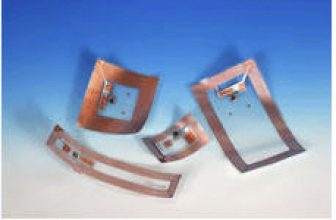
RFID anti-counterfeiting and anti-crossing goods system
[ad_1]
1. Demand analysis
At present, due to the problem of cross-regional transfer of goods in TIS, and the need to read the product labels in the box in batches, the continuous use of barcode technology and other common label identification management is difficult to meet the above two requirements. This will seriously affect the company’s reputation, after-sales service, and work efficiency. With the transformation of business operations from extensive to intensive, in terms of distribution channel management, due to the limitations of technology and means, the one-dimensional bar code labeling management that most companies continue to use is still the traditional mode and management method at the initial stage of operation. The disadvantages in efficiency, cost, and controllability are becoming increasingly prominent. Therefore, the changes in the market environment have put forward new requirements for the channel management methods of enterprises. RFID product anti-counterfeiting and anti-crossing goods management can help companies implement strict supervision and control of the orderly flow of key commodities in the distribution network, improve the company’s channel management level and after-sales service efficiency, and reduce and avoid channel risks. The system uses RFID electronic label technology to accurately and confidentially identify key commodities with a globally unique UID (identity card) identification. Through the commodity inspection function of foreign branches, the problem of cross-region sales and bar code fleeing can be effectively eliminated, and the impact of counterfeit and shoddy can be prevented. Maintain corporate reputation, improve corporate user satisfaction and reduce corporate after-sales service costs and other unnecessary additional losses.
RFID technology has a batch reading function. UHF acquisition equipment can be used to read product ID numbers in large quantities at one time, which greatly reduces the time for collecting product information and improves the efficiency of enterprise production, warehouse, and transportation management.
2. System introduction
Guangzhou Jianyong RFID anti-counterfeiting and anti-crossing goods system mainly adopts RFID technology. Each product is pasted with an RFID electronic label, and data is collected through an RFID data collector (wireless or wired network connection), and the collected data is through a wireless or wired network (Internet) Centralized and timed transmission to the database of the back-end monitoring center, the monitoring center database is installed with anti-counterfeiting and anti-squatting management software developed for the enterprise (or this part of the function is combined with the enterprise website and embedded into the web page, which is convenient for dealers and end users to query) , The detailed information of the goods is read by the software. The company affixes a unique RFID tag on each product, which contains the product name and specification information, production information, serial number, sales information, etc. In particular, the RFID electronic tag can record more detailed product sales area and sales responsibility Data and information such as the serial number of the person and the key accessory, thereby adding a unique, complete and confidential identity and attribute identifier to the product (the data information is provided by the demanding manufacturer and discussed with our company). Using this information can solve once and for all the problem that the bar code cannot complete the collocation and anti-counterfeiting function. Using this information can also provide more and more basis for making sufficient data on other systems in the future, such as CRM (Customer Relationship Management), full traceability management of product end-to-end entire life cycle quality status, distributor management, and so on.

Three, system function
3.1 Anti-fleeing goods query:
In view of the different price strategies of enterprises in different markets, in order to prevent counterfeiting, enterprises can set market divisions when writing labels. Once local distributors find out that there are distributors in other divisions selling in this area, they can use handheld readers. It is easy to find out which channel the product is sold through.
3.2 Sales management (anti-channeling):
Distribution companies can achieve comprehensive, effective and safe management and monitoring of the entire process of commodity distribution by combining RFID technology with invoicing software and enterprise wide area networks. And further obtain valuable commodity warehousing, logistics, sales, payment collection and other data, to provide valuable statistical information, data and reports for the business decision-making of the corporate headquarters. Specific functions will include distribution area management (regional management, person-in-charge management), regional performance management, personal performance management, report management, etc.
3.3 Commodity anti-counterfeiting:
The system first realizes the anti-counterfeiting function with the RFID address code. The address code is globally unique and cannot be copied. The logistics status of each label is recorded in the database. The forged ID number is not recorded in the database, and it is easy to be checked and processed by the system and automatically alarmed.
3.4 User query:
Through the mobile phone or web page, you can inquire about the product purchased by the user on which manufacturer, date, and channel, etc.; there is no need to query related documents (document query is complicated), and you can directly check whether the product is genuine or not on the mobile phone or web page. Related information.
3.5 After-sales service:
The after-sales service department scans the RFID electronic tags to obtain the source and attribute information of the products stored in the tags, so as to perform comprehensive and strict identification and confirmation of the products to be repaired to ensure that the company’s interests are not harmed and effectively improve the quality of customer service . When product quality problems occur or end users give feedback, the system can provide voice calls, e-mails, WEB and other information feedback channels, and the after-sales service center will receive them.
Fourth, the specific anti-counterfeiting and anti-squatting process

4.1 Write tag ID number:
Use a desktop UHF reader to write electronic tag ID numbers in batches. The ID numbers can be written into product name, model, specification, box number, area number, quality inspection number and other information. In addition, RFID electronic tags can be encrypted, and whether to encrypt the tags can be determined according to the specific application. The encrypted electronic label needs to enter the correct password in the RFID collector to read the encrypted electronic label.
4.2 Product labeling:
Receive the electronic label, attach the electronic label to each product before packing the finished product, and scan the label for storage.
4.3 Tag ID binding area:
After the goods are shipped from the management center of the country, when they need to be shipped to the agent, first collect the product tag ID number to be sent into the system and bind it to the corresponding agent number. Each batch of product ID number will correspond to the agent number, and it is clear on the system.
4.4 Query anti-crossing goods:
When it is necessary to check whether the product has a skewer, it is the product that comes from the skewer. You only need to read the electronic label number of the product, and the product name, model, specification, agent number and other information will pop up. It is clear at a glance whether the product is collocated and where it is collocated.
[ad_2]





